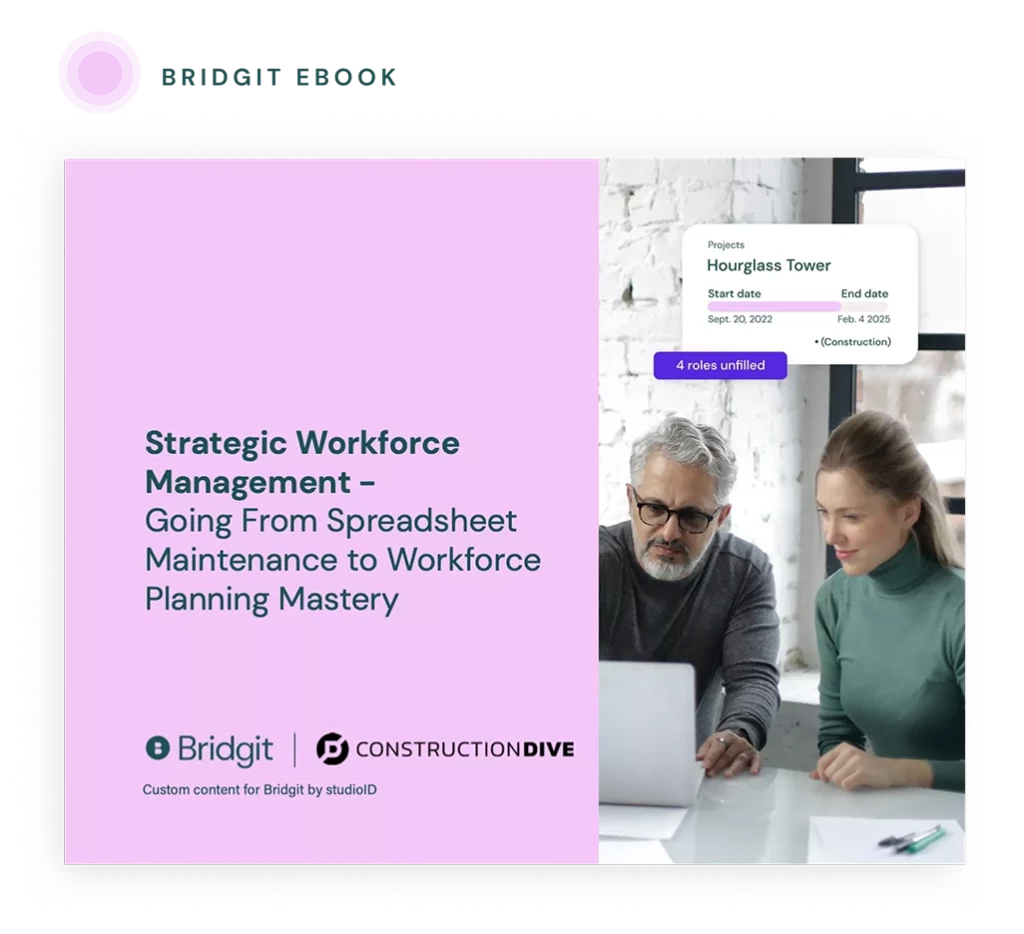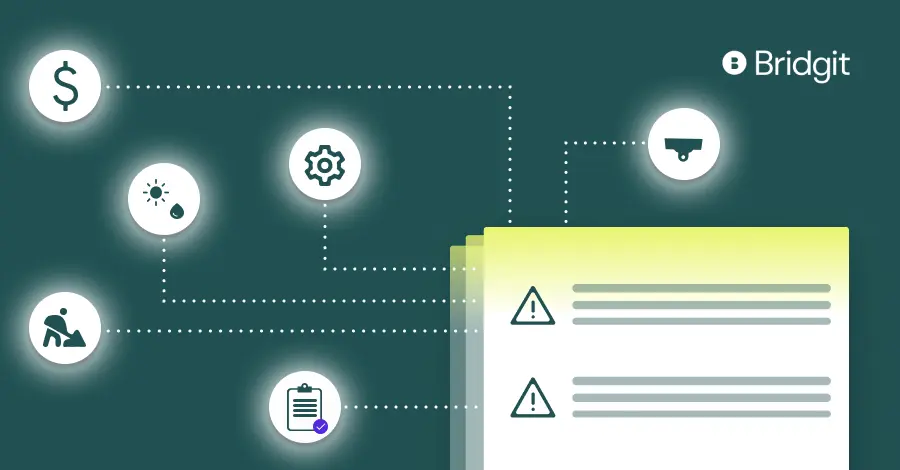The construction industry is a complex sector with many moving parts. Project success depends on a multitude of factors, including the effective management of risk. There are a number of risks that can affect construction projects, from the impact of weather conditions to labour shortages. In this article, we’ll explore eight of the most common construction risk factors and what you can do to mitigate them.
Table of Contents
What are construction risk factors?
Risk factors are potential hazards or threats that can negatively impact a construction project. These risks can come from a variety of sources, and managing them is critical to the success of any project. Effective risk management requires a thorough understanding of how each risk can affect the project.
8 Construction risk factors affecting projects
Here are 8 construction risk factors that commonly affect projects.
1. Economic conditions
Due to the large amount of money required to fund construction projects, the industry is particularly vulnerable to economic fluctuations, making economic conditions one of the most common risk factors. When the economy is struggling, construction activity often slows down, as companies are less likely to invest in new projects. This can lead to labour shortages and an increase in the cost of materials, which can further impact the profitability of projects.
2. Weather conditions
Weather conditions are another one of the important risks in construction projects that can have a significant impact on a project’s timely completion. Extreme weather conditions can cause delays in progress, damage equipment and materials, and injure workers.
Storms can lead to power outages and flooding, which can further disrupt construction activity. Snow and ice can also make it difficult to access construction sites. As such, it’s important to have a plan in place to deal with extreme weather conditions when they occur.

Looking to be more strategic with your people?
We partnered with Construction Dive to outline the steps any contractor can take to be more strategic with their workforce management.
3. Lack of skilled labour
Labour shortages are another common and persisting problem in the construction industry. The skilled trades are particularly vulnerable to labour shortages, as the pool of qualified workers shrinks with many approaching retirement age. Oftentimes, there’s a lack of younger workers to replace them.
This can lead to project delays and an increase in costs as companies are forced to pay overtime rates or bring in workers from outside the area. In some cases, labour shortages can even cause construction projects to be cancelled altogether.
4. Material availability
Materials shortages can also impact construction projects. The construction industry is reliant on a steady supply of materials, such as lumber, steel, and concrete. When there’s a shortage of these materials, companies will often have to pay more for the same amount.
In some cases, construction companies may be forced to use lower-quality materials, which can impact the safety and quality of the finished project.
5. Inadequate planning
Inadequate planning is another common construction risk factor. When construction projects are not properly planned, it can lead to a number of problems, including budget overruns, schedule delays, and safety issues. This can, in turn, put your construction firm’s reputation at risk.
6. Poor project management
Poor project management can have a significant impact on the success of a project. Construction projects are complex undertakings that require a high degree of coordination and communication. When project management is inadequate, it can lead to clashes and conflicts, among a multitude of other issues that could very well cause a project to fail.
7. Permits and approvals
The process of obtaining the necessary permits and approvals can be time-consuming and costly. In some cases, construction projects may be delayed or even cancelled if the required permits and approvals are not obtained in a timely manner.
8. Scope creep
Scope creep occurs when what’s required of a project increases beyond what was originally agreed upon. This can lead to project delays and a significant increase in costs as more work is required to complete tasks at hand. It often causes conflict between professionals, putting the project as a whole at risk.
How to mitigate construction risk factors
There are a number of steps that construction companies can take to mitigate these risk factors.
Establish a risk management plan and conduct a risk assessment
One of the best ways to mitigate risk is to establish a risk management plan. A risk management plan is a document that outlines how a company will identify and manage the risks associated with a construction project. The plan should be tailored to the specific needs of the project.
Risk assessment (the actual process of evaluating risks) would ideally be conducted at the beginning of a project as a preventative measure before they can have a significant impact.
Implement mitigation strategies
Once risks have been identified and assessed, construction companies should implement mitigation strategies, designed to reduce the likelihood or impact of a risk. Common mitigation strategies include changing the way work is conducted, using different materials, or altering the project’s schedule.
Monitor and review
Once mitigation strategies have been put into place, construction companies should take care to consistently monitor and review the risks on an ongoing basis. The monitoring and review process should be conducted throughout the duration of the project in order to identify any new or emerging risks in construction projects.
Communicate with all stakeholders
Communication is critical to mitigating construction risk. Companies should communicate with all stakeholders involved in a project, including owners, contractors, and subcontractors. Stakeholders should be kept up-to-date on the status of the project and any changes that have been made to the project plan.
Minimize risk using Bridgit Bench
These are just a few of the many risks in the construction industry that can affect projects. As you can see, there are a number of potential problems that can arise during the course of a construction project. As such, it’s important to be aware of these risk factors and to have a plan in place to deal with them. By doing so, you can help to ensure that your construction project is completed on time, within budget, and to the highest possible quality.
Consider investing in the use of technologies like Bridgit Bench, which make overseeing your workforce easier and more efficient.


